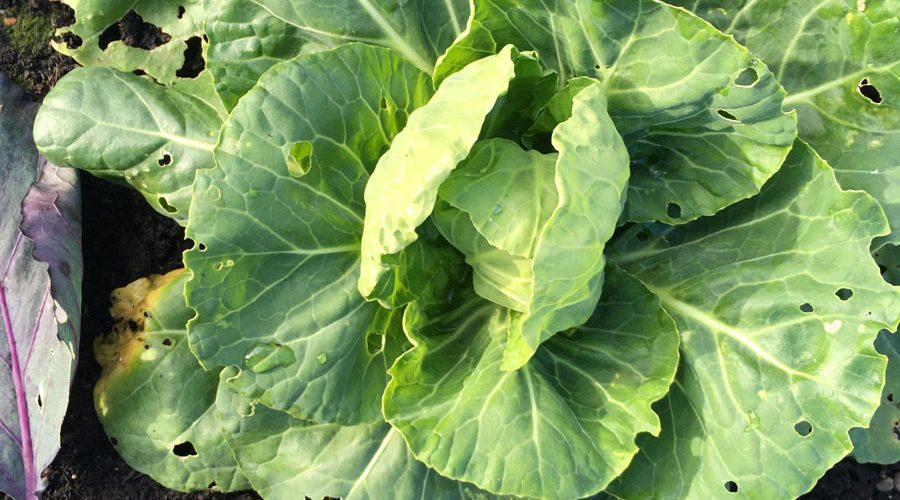Earwigs don’t cause a huge amount of problems in the veg patch, but they can nibble holes in leaves overnight, and it’s easy to confuse the damage with slug damage.
Earwigs will eat small holes in the foliage like those pictured here on our winter green cabbage plant. The holes tend to be quite irregularly shaped, rather than neat circles, and are rarely found at the very edge of the leaf. So, if you can’t see any slime trails (which would suggest slugs and snails) and there are no caterpillars (which often eat away at the edge of the leaf anyway), then you may well find earwigs are the culprits. It’s worth checking at night if you’re not sure, as they are nocturnal creatures so will be easier to spot with a torch in the dark!
Like all creatures, earwigs play their part in the ecosystem – they are good to have in the compost pile, and they also eat aphids so can be useful to have in the veg patch! Earwigs are relatively unproblematic, causing little damage to plants unless their numbers rocket, so for the most part you can relax if you see one or two earwigs in your veg plot. However, if they do get the better of you and your veg, you can try one of these three things:
- Surround the base of vulnerable plants with diatomaceous earth to discourage the earwigs from crawling onto the plants in the first place.
- Lay a piece of cloth under infested plants (in the summer for example you may find they make themselves a home in sweetcorn plants and artichokes) and give the foliage a shake – the earwigs will land on the cloth and you can gather it up and relocate them to the compost pile where they can make themselves useful!
- Put a dampened rolled-up newspaper on the soil between plants where you have a lot of earwigs. Over a few days the earwigs will most likely hide in the newspaper during the day and you can shake them out elsewhere in the garden before nightfall.

